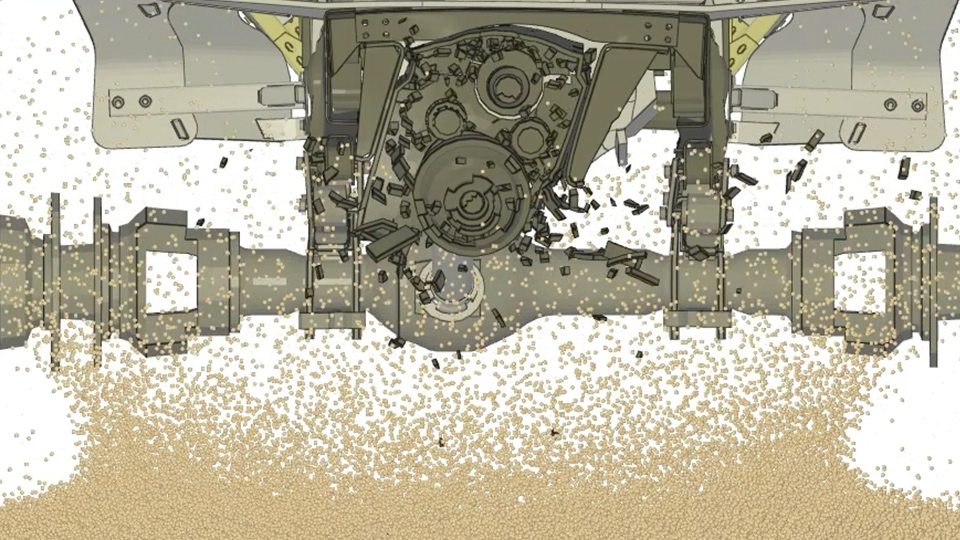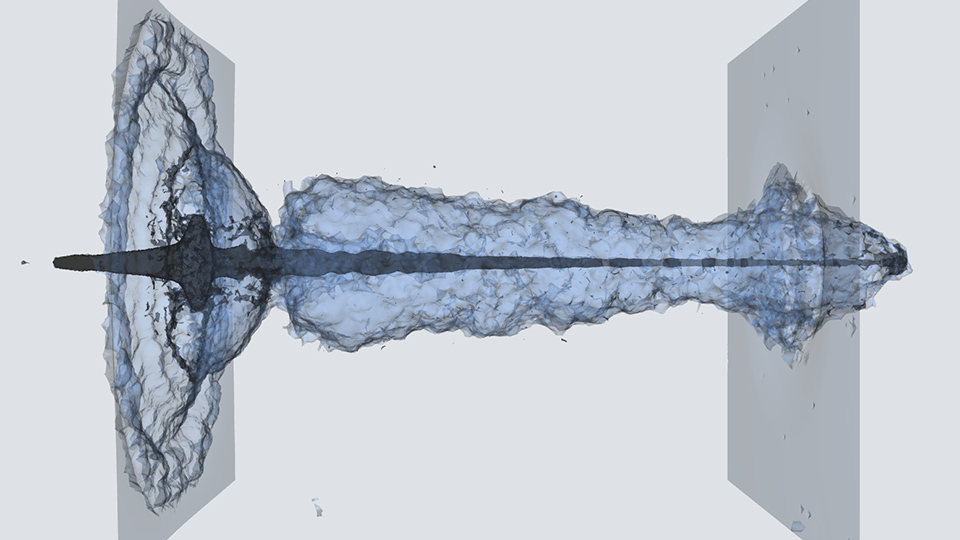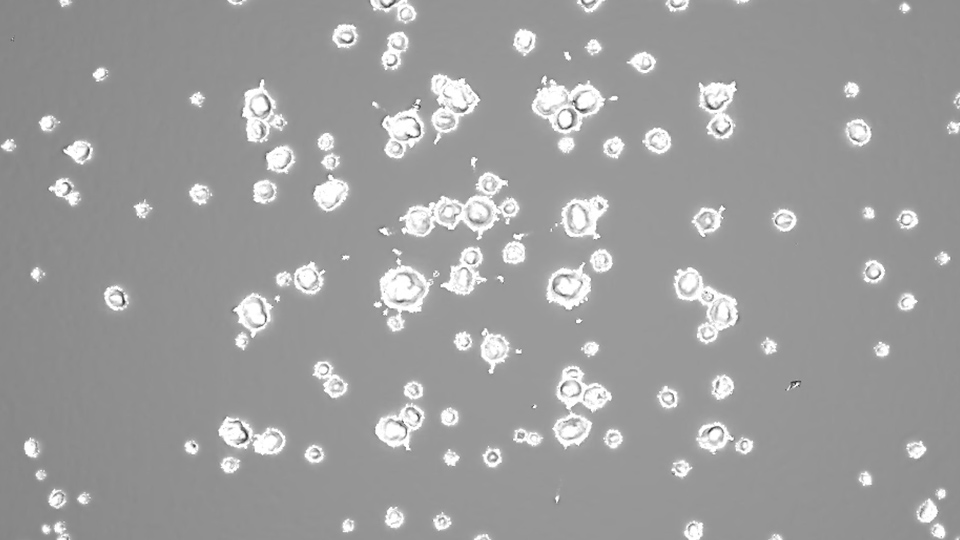There are 6 engines available
Finite Element, Discrete particle, SPH, CFD, VAA and V/L
Finite element engine

The core component of Impetus Solver
Our GPU accelerated Finite Element Engine is a robust, accurate, and user-friendly tool for a wide range of applications, with primary focus on weapon effects simulations.
As a core component of the IMPETUS Solver, it is used to model all solid structures, except for shaped charge jets and EFP’s which (due to enormous deformations) are modelled with Surface SPH.
It is an explicit Lagrangian thermo-mechanical solver with unique higher order elements that can handle very large deformations. It is also fully coupled to our Particle, SPH and CFD solvers.
An important strategy is to keep the number of pure numerical input parameters at a minimum. This makes our FE Engine easy to use when compared to most legacy codes.




Supported material classes include
- Metals
- Ceramics
- Polymers and rubbers
- Foams
- Concrete
- Fibre composites and fabrics
- Granular media
- Propellants
Discrete particle

Accurate IED simulation
Our discrete particle engine is a tool for simulating IEDs embedded in sand/soil. It is easy to use and provides accurate predictions of loadings on vehicles structures exposed to the soil ejecta.
Thanks to the Lagrangian description of motion, coupling between the Particle end FE engines is straightforward and reliable. It is GPU accelerated and has pre-calibrated models for various explosives and for generic dry and wet sands.




Typical applications
- IEDs (Particle Engine for explosive and sand, FE for solid structures)
- ERA panels (SPH for jet/target plates, Discrete Particle Engine for explosives).
Surface SPH

For shaped charges and EFPs
Our Surface SPH solver is a state-of-the-art tool for simulating materials undergoing extremely large deformations.
It is GPU accelerated and uses surface tracking to enable full coupling with our CFD solver. This makes it ideal for simulating complex phenomena such as shaped charges and EFPs.




Typical applications involving the surface sph
- Shaped Charge jet formation (SPH for liner/casing/wave shaper, CFD for explosives)
- EFP (SPH for liner/casing, CFD for explosives)
- UNDEX (SPH for water, CFD for explosives/air, FE for solid structures)
- ERA panels (SPH for jet/target plates, Discrete Particle Engine or CFD for explosives).
- Hydraulic RAM
- Hyper-velocity impact
Supported material classes include
- Metal
- Concrete
- Ceramics
- Liquids
Computational fluid dynamics

GPU accelerated blast loading
Our CFD Engine is a cutting-edge solver for complex blast loading problems. It is ultra-fast (GPU accelerated), explicit, and fully coupled to both the FE Engine and to Surface SPH.
This makes it ideal for simulating a wide range of blast scenarios, ranging from contact detonations to urban blast scenarios.




Typical applications involving CFD engine
- Contact detonations (CFD for explosives and air, FE for solid structures)
- Interior ballistics (CFD for combustion products and air, FE for unburned propellant and solid structures)
- Shaped Charge jet formation (SPH for liner/casing/wave shaper, CFD for explosives)
- Hyper-velocity aerodynamics (CFD for air, FE for solid structures)
- Fragmentation (CFD for explosives and air, FE for solid structures)
- Blast loading (CFD for explosives and air, FE for solid structures)
- EFP (SPH for liner/casing, CFD for explosives)
Vulnerable area assessment tool

Protection coverage analysis
This specialised tool for protection coverage analysis helps engineers identify vulnerable areas in the armour and quantify its capacity at different angles of attack. It guides in the development process and visually presents results to customers.
Minimum input to the tool is a geometric description of the vehicle, and the threats penetration capacity in the different armour materials. However, it also has advanced features to handle edge effects, gaps, heat-affected zones, and refined angle dependencies.


Capabilities
- Threat assessment
- Automated report generation
- Find weaknesses in early development stage
V/L tool

Investigate fragmentation beyond finite element simulation
Fragments generated by Finite Element or Surface SPH engines can be further analysed with the V/L tool. Plot the fragment distribution. Extract a sub-set of fragments.
Calculate the extended fragment trajectories using the drag equation. Set up virtual targets and the energies at the hit spots. Export fragments for use as input in new simulations.


Typical applications involving V/L tool
- Fragment distribution analysis
- Virtual arena tests
- Use as input for new simulations
Pre-license trial
Evaluate before you buy
Our engineers will help you select and calibrate appropriate project simulations to best determine whether Impetus Solver is the best fit for your needs.
Secure & scalable GPU resources
Our secure CLOUD service offers flexible access to scalable GPU processing from anywhere in the world. We are ISO 27001 certified.
Our solution provides high performance computing without the need for localised investment in hardware and maintenance.
